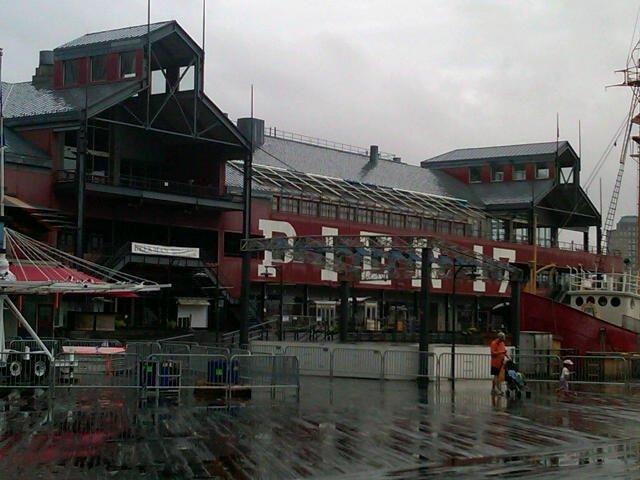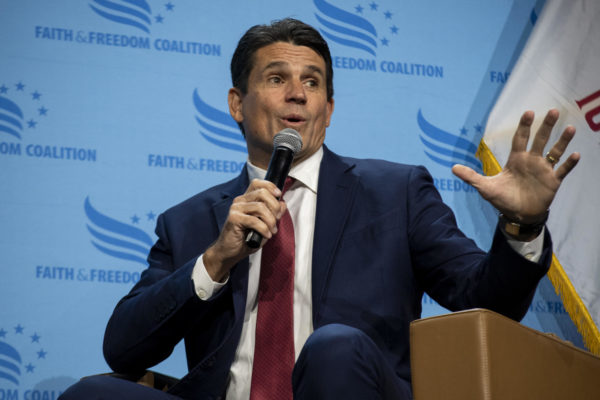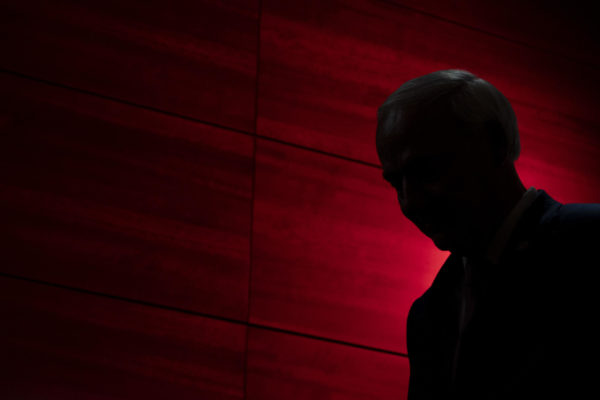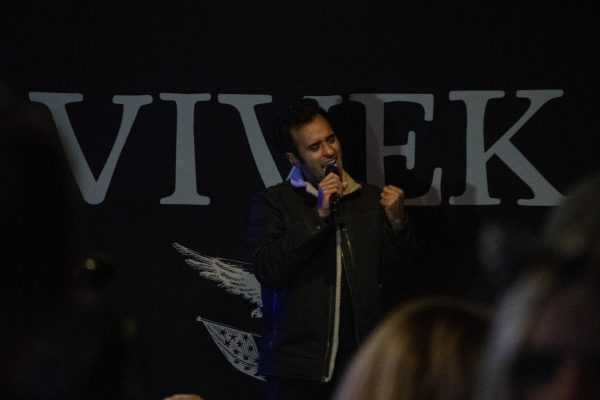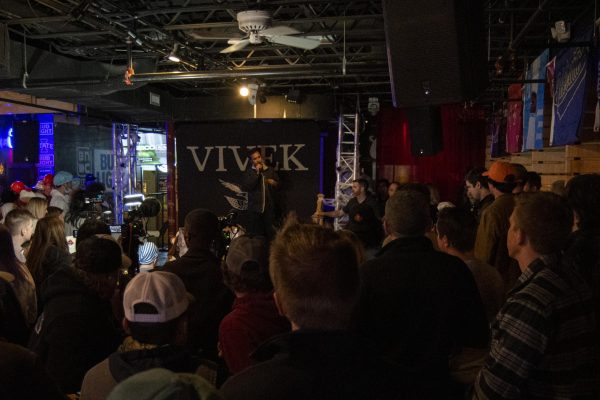New York City closes for business as hurricane hits
For the first time in history, NYC subways were shut down at noon Saturday. MTA workers were out taping off entrances to the subways. Some subways were padlocked. This is all being done in preparation of Hurricane Irene. New York City has never experienced a hurricane of this magnitude. While the City has not been evacuated, Mayor Michael Bloomberg has asked that residents in low areas to move inland. Stores in the area were closed and boarded with anticipation of strong winds coming from Hurricane Irene. Many businesses, including Starbucks, put signs on their doors making customers aware of their closings.
August 28, 2011
Update (7:28 a.m. Sunday, Aug. 28)
New York’s East River and Hudson River topped their banks Sunday morning, sending water into Lower Manhattan, where hundreds of thousands of people had evacuated and millions more were hunkered down to wait out the massive hurricane centered just a few miles away.
Authorities had halted public transportation, closed bridges and tunnels and buttoned up ports, essentially locking down the city of more than 8 million people as wind and rain picked up as Hurricane Irene began to lash the city.
“The time for evacuation is over. Everyone should now go inside and stay inside,” Mayor Michael Bloomberg said after a deadline passed for some 370,000 people to evacuate their residences in low-lying areas.
The center of the hurricane is expected to make landfall after 10 a.m. near the Long Island city of Long Beach, where massive berms were already breached by 8 a.m., with water pushing northward into town. The water ripped a lifeguard building from its foundation and streets were flooded.
Bloomberg ordered evacuations for Long Beach Island, including Atlantic Beach, Lido Beach and Pt. Lookout.
The mandatory evacuations, which were ordered in Manhattan, Queens, Brooklyn, the Bronx and Staten Island, were a first in the city’s history, he said.
More than 640,000 people were without power in New York, New Jersey and Connecticut by early Sunday, authorities said.
Residents lugging suitcases and cradling pets lined up outside temporary shelters after Bloomberg ordered the evacuation.
Throughout the city, empty shelves greeted last-minute shoppers at stores. Caution tapes barricaded the turnstiles at subway stops.
The city wore a deserted look. Except for the few cabs picking up fares on rain-slicked street or the curious pedestrian struggling with his umbrella, the usual landmarks — Times Square, Grand Central Station, the financial district — were devoid of traffic.
Frederico Martins of Williston Park, New York, said he found the bottled beverages aisles almost empty at a Long Island store. “People here are taking it very seriously. Better to be safe than sorry,” he said.
Early Sunday morning, John Muccini was making last-minute preparations to ride out the story in his 25th floor apartment in Manhattan’s Gramercy Park.
Muccini double-checked windows and filled the bathtub with water to serve as an emergency supply of water.
“I don’t think the island of Manhattan is going to turn into ‘Lord of the Flies.’ I don’t think the world is going to forget about us,” he said.
But he conceded that he was taking precautions, having lived through a massive power outage that struck New York City in 2003.
“I’ve got food and water to get through a few days,” he said.
In Brooklyn, Seunh Hong watched in despair as the water in his shop’s basement rose to his knees.
“Way worse than I’d expected,” he said. “It is absolutely horrible. Afterwards we have to spend lot of time and money — energy for fixing them up.”
Many in New York began preparing days ago for the arrival of Hurricane Irene, stocking up on essentials.
But by late Saturday, most stores, restaurants and bars were closed.
“We’ve been staying at home because there’s really no way to get around,” said Allysia Matthews, on Manhattan’s Upper East Side. “Even if you want to go anywhere, they’re closed or there’s no way of getting there.”
The bread shelves were bare early Sunday at the Associated Supermarket on Manhattan’s Upper West Side, according to Aaron Herman, who said more than 1,000 people had stopped in Saturday to buy the “essentials.”
By early Sunday, as the storm began to lash the city, the streets in his neighborhood near 96th Street were empty.
“For a city that never sleeps, it’s clearly taking a nap,” Herman said.
Jon Michael Gimpel, a resident of the Upper West Side, likened the emptiness of the streets to the eerie aftermath of September 11, 2001.
“We got cabin fever and walked around,” said Gimpel, a system engineer. “A lot of shops are closed. No one knows what to do.”
New York City’s massive public transportation system came to a screeching halt late Saturday, with the Metropolitan Transportation Authority stopping all bus, subway and train service.
Across the river in New Jersey, Nick Chavez was settling into to his Edenton home near the Jersey Shore to wait out the storm.
A number of his neighbors had voluntarily evacuated in Monmouth County, though Chavez said he felt safe enough to stay in his home.
But in Manhattan, Mark Penza was conducting business as usual at his BillyMarks West bar where he was serving more than a dozen patrons early Sunday.
“I’m keeping an eye on the weather. …I’m playing it by ear,” said Penza, who co-owns the bar. “But c’mon, this is Manhattan.”
CNN’s Holly Yan, Phil Gast, Eden Pontz, Kristina Sgueglia, Jesse Solomon, Cheryl Robinson, Rob Marciano, and Chris Boyette contributed to this report.
New York City closed for business Sunday as hundreds of thousands were forced to evacuate while millions more hunkered down to wait out a massive hurricane.
Authorities halted public transportation, closed bridges and tunnels and buttoned up ports, essentially locking down the city of more than eight million people as wind and rain picked up ahead of Hurricane Irene’s anticipated arrival about 4 a.m.
Authorities warned that Irene, a Category 1 hurricane with top sustained winds of 80 miles per hour, was capable of spawning a storm surge that could flood portions of New York City. They also warned strong winds could shatter high-rise windows.
“The time for evacuation is over. Everyone should now go inside and stay inside,” Mayor Michael Bloomberg said after a deadline passed for some 370,000 people to evacuate their residences in low-lying areas.
The mandatory evacuations, which were ordered in Manhattan, Queens, Brooklyn, the Bronx and Staten Island, were a first in the city’s history, he said.
“You can’t prepare for the best case. You have to prepare for the worst case,” he said.
Early Sunday morning, John Muccini was making last-minute preparations to ride out the storm in his 25th floor apartment in Manhattan’s Gramercy Park.
Muccini, 38, double-checked windows and filled the bathtub with potable water should the storm knock out power to his building.
“I don’t think the island of Manhattan is going to turn into ‘Lord of the Flies.’ I don’t think the world is going to forget about us,” he said.
But he conceded that he was taking precautions, having lived through a massive power outage that struck New York City in 2003.
“I’ve got food and water to get through a few days,” he said.
Many in New York began preparing days ago for the arrival of Hurricane Irene, stocking up on essentials.
But by late Saturday, most stores, restaurants and bars were closed.
Times Square, the world’s busiest crossroad, was virtually deserted with its eateries and theaters closed.
Jon Michael Gimpel, 42, a resident of the Upper West Side, likened the emptiness of the streets to the eerie aftermath of September 11, 2001.
“We got cabin fever and walked around,” said Gimpel, a system engineer. “A lot of shops are closed. No one knows what to do.”
New York City’s massive public transportation system came to a screeching halt late Saturday, with the Metropolitan Transportation Authority stopping all bus, subway and train service.
At the Seventh Avenue station in Brooklyn’s Park Slope section, more than a dozen people waited for one of the final subway runs.
“What I’m hoping is that they will run trains for the next hour or two to pick up the stragglers,” Kate Sandberg, who was headed to visit a friend, told CNN affiliate WABC.
Across the river in New Jersey, 42-year-old Nick Chavez was settling into to his Edenton home near the Jersey Shore to wait out the storm.
A number of his neighbors had voluntarily evacuated in Monmouth County, though Chavez said he felt safe enough to stay in his home.
But in Manhattan, Mark Penza was conducting business as usual at his BillyMarks West bar where he was serving more than a dozen patrons early Sunday.
“I’m keeping an eye on the weather. …I’m playing it by ear,” said Penza, who co-owns the bar. “But c’mon, this is Manhattan.”
CNN’s Phil Gast, Eden Pontz, Kristina Sgueglia, Jesse Solomon, Cheryl Robinson and Chris Boyette contributed to this report.

